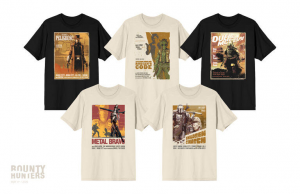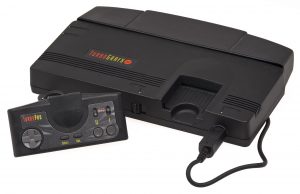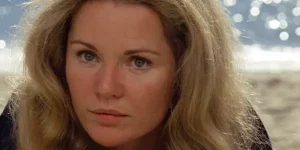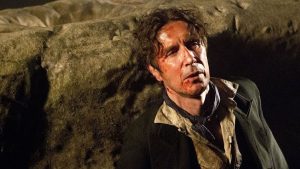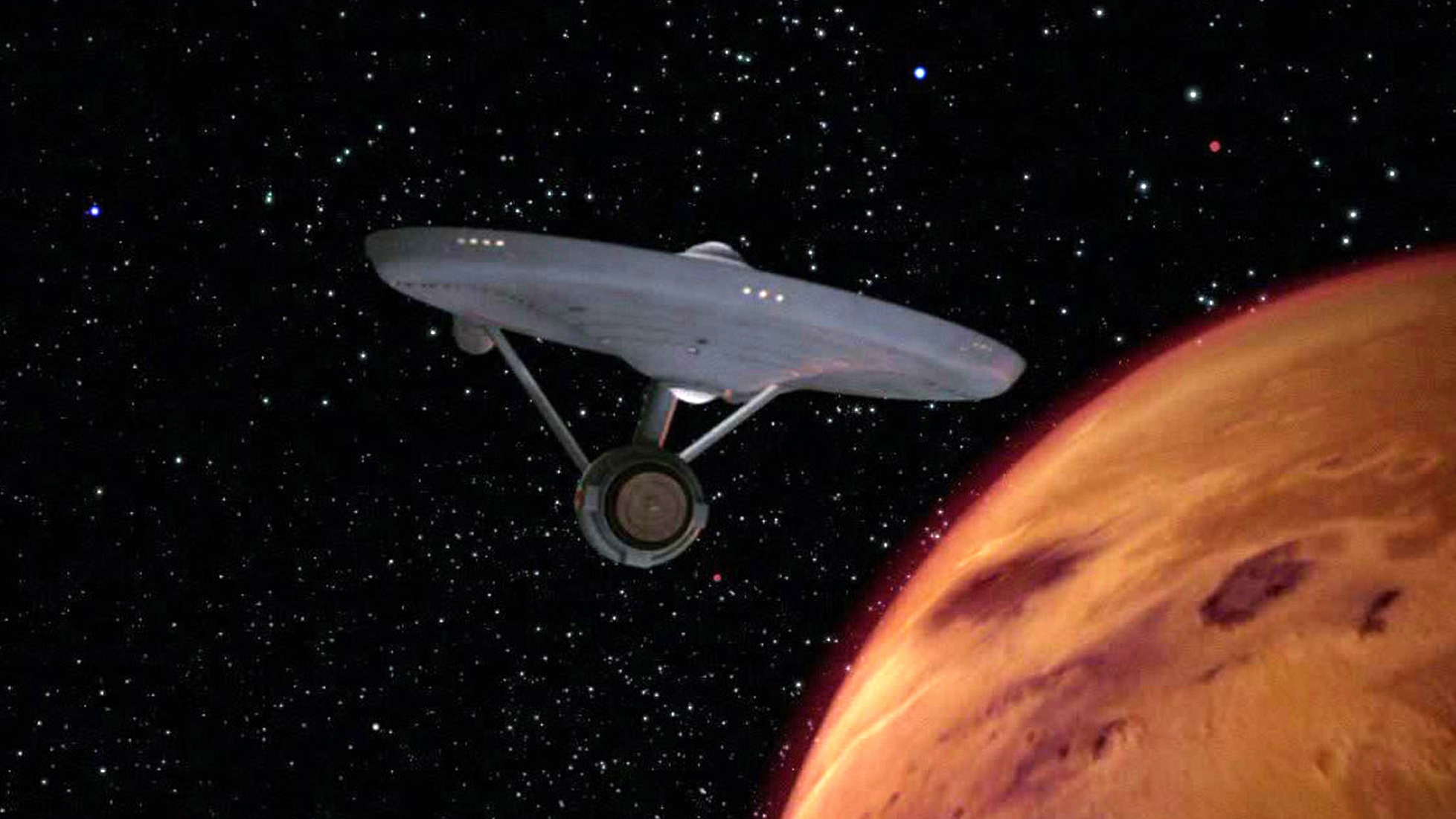
Exploration. Discovery. Evolution.
These core concepts are not just at the center of Starfleet, but of Star Trek itself. The Original Series harnessed the optimism of the 1960s and projected it on screen. That ethos has allowed Star Trek to explore many new ideas through different series, films, spinoffs, and even a reboot on the big screen.
But as vast as the world of Star Trek already is, it could have been so much bigger. The story of Star Trek is, in part, the story of fits and starts. For every project that makes it to screen, there are two Trek projects that never came to fruition. Below is a list of some of the most interesting Star Trek ideas that never made it out of development.
Star Trek – The (Original) Original Series
Even non-Trekkies know that William Shatner’s James T. Kirk wasn’t the first choice as Captain of the USS Enterprise. Instead, Jeffrey Hunter plays Captain Christopher Pike in the first filmed episode, 1964’s “The Cage.” Compelled but not yet sold, NBC asked Gene Roddenberry to try again, which led to the show’s proper pilot (but not, strangely, the first episode aired), “Where No Man Has Gone Before.”
But before Pike took command of the Enterprise, the treatment Roddenberry shopped to networks was about Captain Robert April of the USS Yorktown. Aspects of this treatment did eventually make it into the show, as Admiral Robert April appears in both The Animated Series and Strange New Worlds. And the Yorktown did take flight, getting name dropped in Star Trek IV and Voyager.
Meanwhile, although Roddenberry later reworked it into the season one two-parter “The Menagerie,” “The Cage” is different enough from Star Trek proper that it feels like the pilot of a very different series. In addition to Pike, the Enterprise of “The Cage” was operated by first officer Number One (Majel Barrett, who would go on to play Laxwana Troi in The Next Generation and voice the ship’s computer), Pike got his physical not from Bones but from the even older and grouchier Doctor Boyce (John Hoyt), and trusts not in Sulu but in navigator Lt. José Taylor (Peter Duryea). Even Leonard Nimoy’s Spock, the one familiar face, feels very different, laughing in glee at the sight of alien flora.
Odd as “The Cage” was, its elements have been repurposed for books and comics, as well as plotlines in Strange New Worlds.
Assignment: Earth (TV)
With the help of none other than Lucille Ball, Star Trek made it to air and ran for two seasons. But Roddenberry could tell that NBC didn’t like the return they got on their effects budget. Sensing an imminent cancelation, Roddenberry developed a new series to pitch to studios. Assignment: Earth starred Robert Lansing as Gary Seven, a human descended from a line of people taken from prehistoric Earth and cultivated by well-meaning aliens.
The series would have followed Gary’s attempts to prevent changes in Earth’s history, ensuring that humanity reaches its full potential. But no network (by which I mean just CBS, NBC, and ABC) bit, so Roddenberry reworked his pilot into the final episode of season two, appropriately called “Assignment Earth.”
That episode failed to launch a new series, and while Gary Seven and his sidekick Roberta Lincoln (Terri Garr) do live on in comics and novels, Roddenberry had to save Assignment: Earth‘s benevolent alien ideas for a little-loved 1974 movie called The Questor Tapes.
Star Trek: Planet of the Titans (film)
“Assignment: Earth” was almost the final episode of Star Trek. But a letter writing campaign led by fan Bjo Trimble convinced NBC to pony up for one more season. Of course, in 1969, Star Trek was canceled for good.
But then a funny thing happened in reruns. Star Trek became a smash in syndication, something that could finally be measured thanks to the newly-instituted Nielsen rating system. Then, fan conventions happened, bringing the cast back together and proving that an audience for Star Trek still existed.
Paramount wanted to capitalize on the hype, but couldn’t decide on a particular project. The studio considered a second animated show, a live-action series, and a TV movie before settling on a proper theatrical film.
Written by Chris Bryant and Allan Scott, and then re-written by potential director Phillip Kaufman, Planet of the Titans would have followed the Enterprise on an adventure to the dawn of history, with Kirk and crew meeting the first humans and even giving them the gift of fire.
Prime Directive violations aside, Planet of the Titans didn’t make it out of development. However, it did get far enough along for Paramount to commission concept art from Ralph McQuarrie. McQuarrie’s designs, which included an Enterprise refit, ended up in Star Trek III and in a few episodes of TNG.
Star Trek: Phase II (TV)
When Planet of the Titans stalled, Paramount saw an opportunity to launch their long-planned TV network (the unrealized Paramount Television Service) with a beloved series. The studio brought Roddenberry back on board for Star Trek: Phase II, to launch in 1978.
As its name suggests, Star Trek: Phase II would have been a legacy sequel to the Original Series. Kirk, Bones, Chekov, and Uhura were all slated to return, with promotions for their characters, as would Chapel and Rand. The only hold out was Leonard Nimoy, who was at that time so adamant that he wasn’t Spock that he wrote a whole book about it.
To take the place of Spock, Phase II planned for a full-Vulcan crew member named Xon. A recent Starfleet Academy grad, Xon struggled with a deep distrust for humans, which added an increased level of tension to the show.
The new crew also featured a Deltan called Ilia and Kirk’s new first officer Willard Decker, son of Commodore Matt Decker from “The Doomsday Machine.” If those names sound familiar, it’s because the franchise kept them when Phase II evolved into Star Trek: The Motion Picture.
Well, mostly. The intended romance between the empath Ilia and the swashbuckling Decker doesn’t have much premise in The Motion Picture, but Roddenberry used those dynamics as the basis for Riker and Troi in The Next Generation. In fact, the TNG episodes “The Child” and “Devil’s Due” were initially Phase II scripts, rewritten for the new crew.
And what of Xon? Many of the ideas for Xon found expression in Data, and especially T’Pol from Enterprise, where Vulcan distaste for humans was a major plot point for the first couple seasons. Xon himself got his pon farr on with Saavik in a non-canon comic book, but outside of a placard in Star Trek II: The Wrath of Khan, Xon’s only in-canon name drop occurred when Boimler mentioned him in Lower Decks, because Lower Decks never forgets.
Star Trek II: War of the Generations
Even the most J.J. hating, “Discovery is not real Trek” insisting Trekkie has to admit that Wrath of Khan saved the franchise. By shifting from slow-moving awe and intellectual debates to naval combat, Harve Bennett and Nicholas Meyer made Trek a movie franchise that could compete during the blockbuster age.
But the first idea for Star Trek II would have gone even further. Star Trek II: War of the Generations imagined David Marcus leading anti-Federation rebels, a sort of forerunner to the Maquis. When Kirk goes to save Carol and confront his son, he discovers that the group’s true leader is Khan Noonien Singh.
Of course, a renegade member of the Marcus family and shady Starfleet dealings show up in the aptly-named Star Trek Into Darkness. Given the gap in quality between that film and Wrath of Khan, it’s clear that Bennett and Meyer made the right decision.
Star Trek: The First Adventure (film)
Star Trek V: The Final Frontier was originally intended as the end to the Original Series crew’s adventures. After sending the Enterprise to the center of the galaxy to meet God, Paramount decided to go back to the beginning to celebrate the 25th anniversary of Star Trek. A prequel film called Star Trek: The First Adventure—aka Star Trek: Academy or The Academy Years—went into production.
The story would have recast the main characters (as much as Shatner would have certainly argued that he could play young Kirk with the right hairpiece and girdle) to follow their first meetings. The film showed the early rivalry between Spock and Kirk and Kirk giving McCoy his famous nickname. The crew would have teamed up to save the first version of the Enterprise.
Fittingly enough, that version of the Enterprise became the NX-01 on the show Enterprise. And although Paramount shelved The First Adventure, the idea of a Starfleet Academy story stayed at the front of mind. Some of these aspects ended up in the 2009 Star Trek movie by J.J. Abrams, including Kirk’s rivalry with Spock and his friendship with McCoy. A new “origin” movie that could play with these ideas further is also currently in the works from director Toby Haynes and producer Simon Kinberg. Time will tell if that movie ends up on this list at a later date.
Star Trek and Babylon 5 (TV)
Star Trek: The Next Generation sparked a revival of sci-fi television, which led to the production of SeaQuest DSV, Farscape, and Babylon 5. But before developing it into the TV show we now know, writer J. Michael Straczynski pitched Babylon 5 to Paramount as a Star Trek show. Some have speculated that producers Rick Berman and Michael Piller integrated parts of that pitch into Deep Space Nine, but Straczynski himself has dismissed such rumors, calling any similarities between the two shows pure coincidence.
Star Trek: The Next Generation: The Movie
Paramount planned for Star Trek: The Next Generation to continue the tradition of TOS in more ways than one, with the crew of the Enterprise-D jumping to the big screen after the series ran its course. We know that the transition happened in Star Trek: Generations, in which the Nexus allows Captains Kirk and Picard to meet.
Originally, however, writer Maurice Hurley wanted to bring the Captains together by borrowing a page from Geordi’s Leah Brahms playbook. In that version of the movie, Picard would create a version of Kirk on the holodeck to help him deal with an inter-dimensional invasion.
Paramount passed on the idea and went with the Generations plot we know. However, with the revelation from Picard‘s third season that Kirk’s remains currently reside in the Daystrom Institute, perhaps it won’t be too out of the question for a recreated Kirk to appear in the 25th century at some point, especially since Strange New Worlds has its own young Kirk in Paul Wesley.
Star Trek: IMAX (‘short’ film)
Given how much the movies love to show off the Enterprise, an IMAX Trek movie seems obvious. In 1997, Paramount wrote a script for a 40-minute IMAX short film that would have showed off state-of-the-art technology.
We don’t know much about the script at this point, other than the fact that it would have starred Chief Miles Edward O’Brien and Chancellor Gorkon, the Gorbachev-styled Klingon Chancellor who died in Star Trek VI. As much fun as it would have been to see that improbable pair hanging out together, the film never made it past the script stage.
Captain Sulu
George Takei has a famously rocky relationship with William Shatner. Surprisingly, he describes his time shooting the disastrous Star Trek V, directed by Shatner, as “surprisingly pleasant.” Still, Takei was reluctant to join up for one last run with the old crew, which is why Sulu gets promoted to Captain of the Excelsior sometime before Star Trek VI.
When the Star Trek: Voyager episode “Flashback” revisited Sulu’s actions on the Excelsior during that film, fan demand grew and producers began toying with the idea of a Sulu-focused TV movie. Some versions even considered teaming Sulu with his daughter Demora, first introduced in Generations.
However, the idea didn’t get farther than that, letting Takei go on to his true calling as elderly meme machine.
Star Trek: Enterprise Season 5+ (TV)
Even the show’s biggest defenders admit that it was a long road for Enterprise, going from hated (and unnecessarily horny) prequel show to compelling television. But by the time the series hit its fourth season and the Xindi arc really kicked in, Trekkies and casual viewers had come around to the voyages of the NX-01. Ultimately, it’s a shame the show never got to see its plans through.
According to initial plans, season five would have seen a major redesign for the Enterprise and a Romulan war. Other ideas included Alice Krige playing a human science officer who encounters a Borg (leading to her becoming the Borg Queen), and even a return to the Mirror Universe and the further adventures of Empress Sato.
Of course, the fourth season never happened and Trek disappeared from televisions until Star Trek: Discovery in 2017, which did go all in with the Mirror Universe and its evil Empress—but Philippa Georgiou (Michelle Yeoh) instead of Hoshi.
Star Trek: Lions of the Night
Before the franchise took the plunge with Star Trek: Prodigy, a different CG animated series was in development in 2003 and would have brought George Takei in as a voice actor. Jimmy Diggs, the writer who created the concept, referred to it as “Captain Sulu takes command of the USS Enterprise-B and must stop a Kzinti (as featured in Star Trek: The Animated Series) invasion of Federation Space.”
Considering the warm reception of Voyager‘s “Flashback” and apparent interest for something Captain Sulu, it’s a massive shame this didn’t happen. Of course, Takei is still with us and could still do something like this. But even if he’s not in, we have Jon Cho’s Sulu waiting in the wings.
Star Trek 11 – Nemesis Sequel (film)
Yes, there could have been a “Justice League-style” team-up film starring all of your favorite Star Trek captains. Brent Spiner and Star Trek: Nemesis writer John Logan pitched a follow-up to the 10th Star Trek film in which Khan, the Borg, Shinzon, and lots of other baddies from Star Trek‘s movie past return to wage war on the Federation. Of course that means Picard and his crew have to travel back in time to recruit Starfleet’s greatest heroes.
Picard saves Data just before he blows up in Nemesis and then goes even further back and saves Kirk from his death in Generations. Not enough for you? The pitch even brought back Spock and Captain Archer from Star Trek: Enterprise. Later the refitted and upgraded Federation flagship under Captain Picard’s command is joined by Admiral Janeway and the USS Voyager as well as Captain Sisko and the Defiant. A plot device or two results in the Enterprise, Voyager, and Defiant assisting Captain Riker’s USS Titan in Romulan space. Beyond the fact that this would have been the most expensive Trek movie ever made, the failure of Star Trek: Nemesis at the box office killed this all-star team-up completely.
Star Trek (11): The Beginning (film)
As much as we grouch about Star Trek prequels, the concept isn’t anything new. Back in 2005, the movie Star Trek: The Beginning was supposed to bridge the gap between Star Trek: Enterprise and the Original Series. The Beginning would have featured Tiberius Chase, Kirk’s ancestor and the man who originated his hated middle name. The series would have dealt with a war between Earth and the Romulans, which threatened to undo the young Federation.
Given the mixed reception to Enterprise, Paramount deemed it wiser to scrap all connections to that show, leaving space for the J.J. Abrams reboots.
Star Trek: Final Frontier (animated web series)
By the mid-2000s, networks were already experimenting with streaming by creating exclusive content for their websites. But instead of doing something like The Office: The Accountants—side stories from The Office streamed on NBC’s site—Paramount planned to make an entire Star Trek animated webseries for startrek.com.
Star Trek: Final Frontier took place in 2528, almost 200 years after Star Trek: Nemesis. A war with the Romulans has destroyed the Klingon Empire and badly crippled the Federation. Worse, humans have lost their major allies as Andoria was lost in the war and the Vulcans pulled out from the Federation. In this bleak future, Kirk’s descendent Alexander Chase would try to rebuild the Federation with his plucky crew.
Obviously, Final Frontier didn’t happen. But some of the ideas did get repurposed for other projects. One of Chase’s crew was to be an energy-based lifeform called Mr. Zero, who wore a containment suit. That sounds a lot like Zero from Prodigy, a Medusan who also lives in a containment suit.
Discovery‘s later seasons also dealt with the crew trying to reestablish the Federation after it was decimated in the far future, while the destruction of Romulus resulted in the creation of Ni’Var, the new name for the planet Vulcan, on which Romulans and Vulcans now live together as one.
For those who want to know more about Final Frontier, however, there is a huge amount of archive for this particular lost Trek, with the development team behind it having made it available at www.startrekff.com.
Star Trek: Federation (TV)
The 2000s were a big decade for Bryan Singer, as his X-Men movies earned him a lot of acclaim and most did not yet know about his misdeeds. A massive Trekkie, Singer used his position to pitch a new television series, getting some help from writer Geoffrey Thorne and current Mission: Impossible director Christopher McQuarrie.
Star Trek: Federation took place in the year 3000, nearly 500 years after Nemesis, and also dealt with the dissolution of the Federation. Things get worse when a force called the Scourge wipes out several Starfleet ships and Federation colonies.
Alexander Kirk, a descendent of James T. and a survivor of the Scourge attacks, becomes the captain of the newest version of the Enterprise, who goes on a series of adventures, hoping to rebuild the Federation.
Paramount showed great interest in the idea and even penciled it in for a 2008 release. But the project didn’t get further than a full pitch document, and dropped from the calendar when the 2009 movie went into production. A lot of this pitch ended up in the latter seasons of Discovery instead.
Star Trek: The New Animated Series
After writing the screenplay for 2009’s Star Trek, Roberto Orci and Alex Kurtzman pitched an animated Star Trek to CBS. The duo had some success with the cartoon series Transformers: Prime, which spun out of the Transformers movies they had written, and hoped to replicate that again. But CBS worried that the movies would distract from any TV projects and passed on the show.
Star Trek: The Next Generation – The Worf Chronicles
Michael Dorn holds the record for the most appearances in Star Trek, having played Worf in TNG, the TNG movies, DS9, Picard, and even playing Worf’s papa Mogh in Star Trek VI. And you know what? We still can’t get enough of our favorite Klingon/prune juice enthusiast.
Many Worf-focused pitches have been floated over the year, the most famous being a script by Dorn itself. Captain Worf would have seen the Bane of House Duras bringing the Federation and its old enemy the Klingon Empire closer together, while dealing with pressures from all sides. At the same time, Worf would deal with the fallout of the Dominion War and the sudden change in leadership among the Klingons, from Gowron to Martok.
Dorn’s return to the character in season three of Picard hinted at a slightly different version of events, as Worf left the Federation for a while after captaining the Enterprise. However, that run only whetted fans’ appetite for more Worf, hopefully in Star Trek: Legacy.
Quentin Tarantino’s Star Trek
One of Quentin Tarantino‘s most infamous movie ideas that never made it to the big screen involved his desire to make a Star Trek movie, a surprising possibility for the franchise-averse director. In 2017, Paramount announced that they had given a green light to Tarantino’s script, with Abrams set to produce.
Little is known about what Tarantino’s Star Trek would have been, outside of the fact that it would have been inspired by the TOS episode “A Piece of the Action,” in which Kirk and Spock land on a planet that resembled 1920s Chicago.
However, in 2023, co-writer Mark L. Smith shared a few aspects with Variety: “It was just a balls-out kind of thing,” Smith told the outlet. “But I think his vision was just to go hard. It was a hard R. It was going to be some Pulp Fiction violence,” he explained, while assuring readers that there was “[n]ot a lot of the language.”
Tarantino walked away from the film when he decided to do The Movie Critic as his 10th and final film. But since no one but him has said he can only make 10 movies, maybe he’ll boldly go back to Star Trek at some point.
Star Trek 4
Even before the release of Star Trek Beyond, Paramount began working on a sequel, which would have brought back Chris Hemsworth as George Kirk, the father of James, who died at the start of 2009. The film would have involved Kirk recovering his father from a pattern buffer, in the same way that Scotty arrived on the Enterprise-D in the TNG episode “Relics.”
In 2016, Abrams commissioned a script by J. D. Payne and Patrick McKay, and S.J. Clarkson signed on to direct in 2018. The production hit snags because the studio could not come to terms with Chris Pine and Hemsworth about script, salary, schedule, or some combination of the three. Clarkson left the project in 2019 and was briefly replaced by Matt Shakman, who also left to helm the upcoming Fantastic Four movie.
As of this writing, a fourth Kelvin Timeline Star Trek movie is still in consideration, but there’s been no official progress.
Noah Hawley’s Star Trek
With both a Kelvin Timeline movie and Tarantino’s film stalled, Paramount hired Fargo and Legion creator Noah Hawley to begin work on a different Star Trek film. As with his well-known television series, Hawley planned to take creative liberties with the material, riffing on ideas from established Trek canon while finding his own interpretation.
Hawley’s film would have featured a new crew on a different ship, potentially played by Cate Blanchett and Rami Malek, encountering an alien virus that creates paranoia throughout the Federation. The COVID pandemic slowed the movie’s production and rendered its virus plot unsuitable. Hawley continued to discuss what could have been over the years, but has since moved on to make an Alien series for Hulu.
Star Trek: Legacy
Perhaps we should put an asterisk next to Star Trek: Legacy, because we still have hope that it will happen. The third season of Picard not only brought back together the crew of the Enterprise-D, but also checked in on other characters such as Tuvok from Voyager and ended with Seven of Nine as the captain of the Enterprise-G.
Picard season three showrunner Terry Matalas has been vocal on social media about wanting to continue the story with a new series dubbed Star Trek: Legacy. This show would focus on Seven’s adventures aboard the new Enterprise, while she encounters various people from the era, including looking in on members of Deep Space Nine and Voyager. While Trek heads Alex Kurtzman and Akiva Goldsman seem receptive to the idea of Legacy, nothing official has been announced. And with Matalas moving on to make a Vision series for Marvel, it seems like Picard season three is the end of the legacy.
The post The Star Trek Movies and TV Shows That Never Happened appeared first on Den of Geek.

